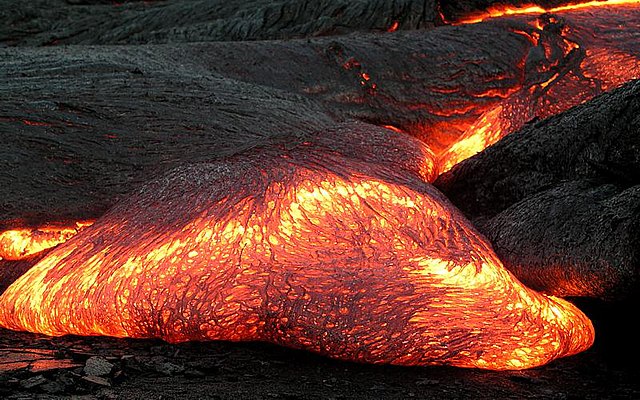The Green Planet Monitor

The Fire Beneath
Some like it hot – or get used to it. In Iceland, where volcanoes belch hot gases and volcanic cracks burst open, spewing thousand-degree magma across the landscape, volcanism is a way of life.
This past November, the town of Grindavík, population 3400, on Iceland’s Reykjanes peninsula, was evacuated as red hot magma — 1200-degree hot; that’s 2200 Fahrenheit — started pouring out of a nearby crack.
Iceland owes its very existence to this thick, super-heated fluid. The world’s 18th largest island is formed from magma, oozing out of a huge fissure on the bottom of the north Atlantic, where two of Earth’s largest tectonic plates originate, spreading apart from each other.
As they spread, magma rises, solidifying into basaltic rock and forming a ridge. Iceland, about the size of southern Britain, is perched on top that mid-Atlantic ridge. Sometimes it’s quiet – relatively speaking. Every few thousand years, things heat up. That’s what’s happening now.
To learn more about Iceland and its geology, I reached out to Freysteinn Sigmundsson, a geophysicist at the Nordic Volcanological Center, at the University of Iceland’s Institute of Earth Sciences, in Reykjavik.
Listen to our conversation in today’s podcast. Click on the play button above, or go here.

Shawn O’Halloran at 2015 CD release party (Clive Baugh)
Shawn O’Halloran was a Canadian musician based in Hamilton, Ontario. Shawn passed away, in most untimely fashion, back in 2019. Among the dozen songs he wrote and performed for Earth Chronicle Productions, back in 1993, accompanied by percussionist Paul Panchezak — Tectonics. Listen to Shawn’s song in today’s podcast. Thankfully, Paul Panchezak is still drumming away with Hamilton-based group Trickbag.

Volcanic eruptions, ground fissuring and red hot magma creeping towards town can be a big nuisance, not to mention a deadly hazard. On the other hand, volcanism provides heat and electricity to Iceland’s 373,000 people, and also a Blue Lagoon to bathe in.
Near surface geology also provides an opportunity to store atmospheric carbon – permanently. There’s been lots of talk over the years about carbon storage and capture as a way to fight Earth warming: pumping CO2 into the ground; into porous rock or gas deposits. Climate activists see it as a scam. How long will that CO2 stay in subsurface deposits, before it seeps right back into the atmosphere again?
In Iceland, and other places where granitic rocks forms from magma, not far beneath Earth’s surface, scientists have been combining CO2 with water – carbonating it – then pumping that water deep down. Slowly, that CO2 becomes incorporated into carbonate rock.
I spoke about this, a few years ago, with Peter Kelemen, Arthur D. Storke Memorial Professor of Earth and Environmental Sciences at Columbia University, in NYC, and a member of Columbia Climate School’s Lamont-Doherty Earth University.
Thanks to Dan Weisenberger for his fabulous guitar instrumentals.






 Visit Podcast Website
Visit Podcast Website RSS Podcast Feed
RSS Podcast Feed Subscribe
Subscribe
 Add to MyCast
Add to MyCast